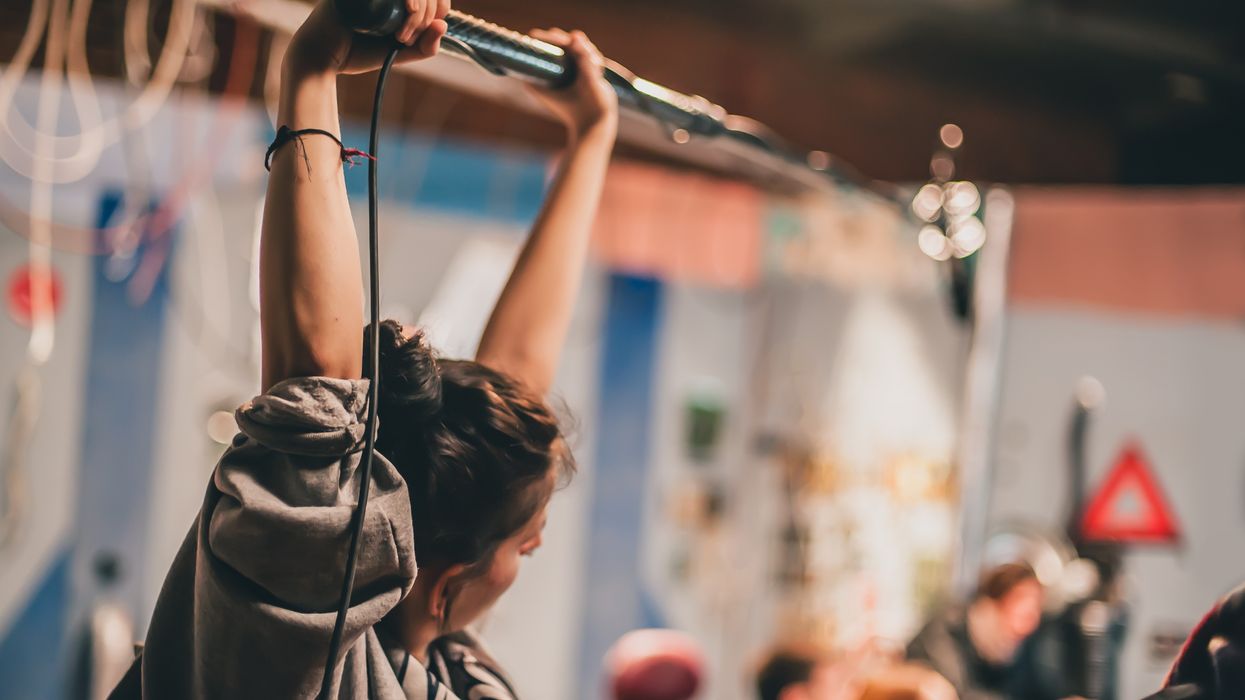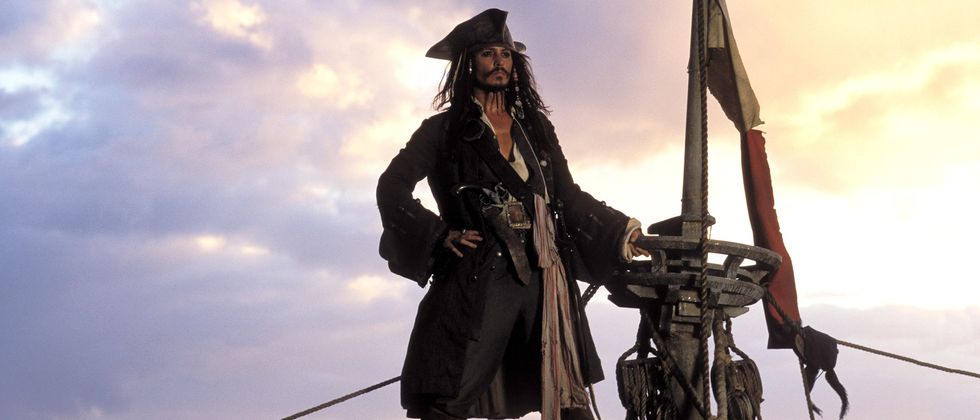Field Recording 101: How to Make Sure Your Documentary Sounds As Good As It Looks (Part 1)
There's nothing more challenging than capturing an unpredictable subject on camera—except maybe for capturing usable sound of that subject!

Documentary audiences are forgiving of picture quality. Shaky cell phone footage? It’s personal. Pixelated Digibeta? Historical. Grainy 8mm? Ephemeral. But if the audience can’t hear someone because you’re standing next to a waterfall where a dump truck is trying to parallel park, people get pissed.
So how do you record high-fidelity sound in a changing environment with a small (or no) crew? First, let's just make sure we are all on the same page with the basics. Below is a guide to choosing appropriate audio gear for docs. In part two of this series, we'll share case studies from various documentary filmmakers on how they managed to capture great sound on some very challenging productions.
If you're strategizing sound for your next documentary shoot, this should give you a great place to start!
The best microphone on a documentary is the one that will best anticipate the challenges you'll be faced with following your story.
What microphones are best suited for documentary?
Oh, the hot tubs of tears I've cried over lost audio! The best microphone on a documentary is the one that will best anticipate the challenges you'll be faced with following your story. Multiple subjects? Noisy space? Need to be incognito? The right choice will depend on your subject, crew size, budget, and shooting environment. Here's a breakdown of the most common mics being used on documentaries right now, and what they do differently from each other.
Option 1: Lavalier mic(s) attached to your subject(s)
1969 was a great year for future documentary filmmakers: the tiny microphone that you could clip to your lapel was introduced. In documentary filmmaking, lav mics are almost always omnidirectional (picking up sound from all directions) because it allows the mic to capture great sound close-up while being unobtrusively clipped anywhere on the subject (lapel, jacket, t-shirt, hat) instead of being pointed in the exact direction of the subject's mouth. Directional lav mics are generally reserved for situations like Broadway musicals or high-stakes tech unveilings in Silicon Valley, where it doesn’t look weird to have a mic taped to your face.
As they've gotten more affordable and reliable, wireless lavs have become rulers of the doc game. They move beyond the realm of sit-down interview to allow your subject to move freely while having a constant reliable source of audio during their every movement. You can follow them everywhere, even into the bathroom if you’re not careful. (Who knows, you may get a murder confession.)
That being said, a wired lavalier still has its perks and uses. Since you skip the transmitter/receiver in the cost, you can get a higher quality wired lav for less, which may be worth it if you are doing strictly movement free/ sit-down interviews.Even if you go wireless, it can be worth it to stash a wired lavalier in your kit. It can save your ass in the frustrating event of unmitigable wireless interference during an interview.
Further reading:
- Lav Like a Pro: Here Are a Few Basic Tips for Using a Lavalier Mic
- Watch: A Beginner's Guide to Using Lav Mics
Attaching a shotgun microphone to your camera will at least ensure that the direction your camera is pointing is the direction of sound you will be picking up.
Option 2: Shotgun microphone mounted to the camera
See, the problem with the on-board mics that are built into video cameras is that they are almost always omnidirectional. Unlike in the case of lav mics, being omnidirectional on your camera is bad because you are usually too far from the action you are hoping to capture. More likely, you will be picking up the sound of your fingers rack-focusing or a hot-dog vendor shouting, or just about anything other than the action you are trying to record.
Attaching a shotgun microphone to your camera will at least ensure that the direction your camera is pointing is the direction of sound you will be picking up. A directional shotgun mic points in the direction of the sound it is picking up. The pickup pattern (cardioid, supercardioid, hypercardioid) indicates just how narrow the scope of that pickup is.
Further reading:
Option 3: Shotgun on a boom pole operated by someone other than the camera operator
When people say boom mic, it just means mic on a boom pole, but the type of mic is usually a shotgun. Instead of being limited to pointing in the direction and distance where it is mounted on the camera, a directional mic on a boom allows you to go wherever the sound is!
While they may be trickier to operate, and require at least a two-person crew, having a shotgun on a boom that you can move around to capture a shifting environment is a great way to tackle the unpredictable nature of recording in the field. Plus, they look cool and you can poke people with them! But it helps to have some experience operating a boom mic as there is still room for error.
Further reading:
- 6 Boom Pole Positions That You Should Know About
- Watch: How to Make Your Boom Mic Disappear Using a Little Magic in Post
- If You've Never Used a Wireless Transmitter with a Boom Mic, You Might Want to Now
When you have multiple sources of audio, you will need to think about how you plan to sync these sources in post.
Option 4: A combination of some or all of the above microphones recording into the camera, a recorder, or both
More often than not, documentary filmmakers will find themselves employing more than one kind of microphone to ensure that they have useable audio from multiple perspectives or for backup. As you'll see in the real-life examples in part two of this series, many filmmakers are using lavs, booms, wild mics (i.e. on-board camera or on-board recorder microphones left to capture audio 'wild') together.
One thing to consider in all of this is, what you are recording your sound onto: directly to your camera or to a portable recorder? Or both? When you have multiple sources of audio, you will need to think about how you plan to sync these sources in post.
Generally, options for syncing are:
- Do it manually. A tedious but not impossible task of finding something loud in each clip and moving it, frame by frame, in sync with the same loud moment in another clip. The more footage and audio sources you have, the more mentally deranged you will get trying to DIY!
- Use syncing software like Pluraleyes or something native to your editing program. Using algorithms and witchcraft, software listens to your footage and audio and attempts, usually very successfully, to sync for you.
- Jam sync your devices while shooting. The most advanced syncing option, in a nearly full-proof 'jamming' scenario, one device has a master timecode that is generated and followed by all the other devices. Meaning that when it comes time to edit, you or your post team can sync by timecode [usually] by pressing a single button in your editing software.
Further reading:
- Do You Need to Sync Some Audio? Here Are a Few Quick & Easy Ways to Do It
- What You Need to Know About Shooting a Multi-Cam Project
A note on microphones not mentioned:
The above are the most common mics used on documentaries. There's no mention of specialty options, like boundary mics (omnidirectional condenser mics that mount to a surface and capture sounds of a whole room, a piano, athletes hitting each other, etc.) You might also need to consider a situation where you require a dynamic mic instead of a condenser (e.g. if you are recording really loud things like death metal singers, race-cars, or man-on-the-street interviews). To dive into that aspect of mic selection, check out What You Need to Know Before Choosing the Right Microphone for Your Project.
This is part one of two. Click here for the second part, featuring case studies from the field.
Featured header image of filmmaker Jason Sussberg operating the boom mic while co-director David Alvarado operates the camera in their two-man-filmmaking-band.














